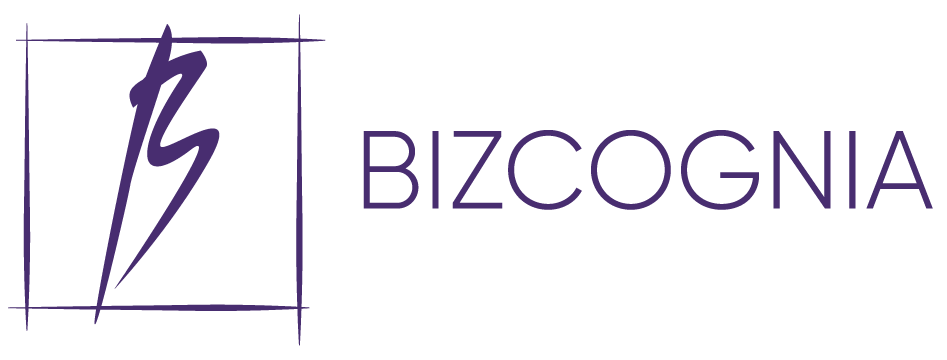Every day, millions of people use the Tor network to browse the internet anonymously and protect their privacy. And contrary to popular opinion, it’s not just criminals and terrorists who use it. In fact, many law-abiding citizens use Tor for a variety of reasons.
If you’re curious to learn what kind of traffic goes through the Tor network and exactly what kind of activities people are using it for, check out our list of the most interesting Tor statistics. We’ll also share some facts and figures about Tor usage, along with a few fun tidbits. So, without further ado, let’s dive into the world of Tor!
Tor Stats 101
- More than 90% of Tor’s budget is intended for program services.
- Tor is used by more than two million people all over the world.
- A whopping 75% of Tor’s domains are marketplaces.
- Nearly 40% of Tor users say they use it to remain anonymous.
- Less than 7% of Tor users access the network for malicious purposes.
- More than one million people visit Facebook through the Tor-friendly version.
Tor Stats & Facts
1. The Tor Browser and the Tor Network are two separate entities.
An interesting fact about Tor is that it’s comprised of two different things, a network and a browser. The TOR network is basically a web comprised of many voluntary computers allowing users to surf the World Wide Web anonymously. The browser, on the other hand, is the application Tor users use to access the TOR network.
2. More than 90% of Tor’s budget is intended for program services.
Official Tor statistics for the fiscal year 2019-2020 report that 90.4% or a little over $4 million of this non-profit’s budget was intended for program services, 6.4% or around $300,000 for fundraising, and 3.2% for administration. Data further reveals that Tor’s total revenue and support for the same year amounted to approximately $4.9 million.
3. It is both legal and safe to use Tor.
And not only that, but it also allows you the freedom to browse a larger number of websites than conventional browsers like Chrome or Edge. Moreover, despite browser usage statistics showing Chrome is the most widely used in the world, it does restrict access to the surface web. So, if you want to increase the width of your Internet access beyond the light or dark web and still remain within the limits of what’s legal, Tor may be exactly what you’re looking for.
4. Tor is used by more than two million people all over the world.
According to the latest Tor usage statistics and metrics, there are over two million users directly connected to the Tor network. This number has been growing steadily over the years as more and more people become aware of the importance of online privacy and anonymity. Interestingly enough, charts display a peak of over four million Tor users at the beginning of 2021, which coincides with Trump’s impeachment trial.
5. With 49.79 %, Russia holds the largest share of Tor users by country.
Believe it or not, Tor user statistics further show that with an 8.91% share, the United States holds the second position on the list of top 10 countries by bridge users. It is followed by Germany (3.85%), Iran (2.63%), and France (2.24%). India, the United Kingdom, and Ukraine complete the list with 2.06%, 2.06%, and 1.35% shares, respectively. Note that the data is based on the number of directory requests made by users to connect via bridges.
6. Tor hosts more than 65,000 URLs with the .onion extension.
What this means, according to Tor stats, is that more than 65,000 websites have hidden servers, cannot be indexed by popular search engines, and by default conceal the identities of people or organizations that run them. Back in 2019, this number stood at 55,828, as per the report of threat intelligence company, Recorded Future. The report also revealed that at that time, only 8,416 of these sites were active and that around 100 were part of the criminal network.
7. Tor usage statistics reveal just 1.5% of all traffic is intended for accessing the Dark Web.
Although there is a misconception around the idea that Tor is used for criminal activity, this is not the case. In fact, data says only 1.5% of Tor users access dark or hidden websites, which means the rest of the traffic is directed at the surface web or normal websites. The more astonishing discovery, however, is that most of these dark websites (or 78%) are in English.
8. A whopping 75% of Tor’s domains are marketplaces.
In 2016, the research firm Terbium Labs conducted a study on 400 randomly selected .onion sites and found that 75% of them were marketplaces. These marketplaces are mainly fueled by cryptocurrencies and sell a variety of things, including drugs, weapons, and stolen credit card numbers. However, the report also states that the amount of illegal cryptotransactions, using Bitcoin in specific, has seen a significant decline since 2012.
9. Tor is funded by the US Government.
Since we are discussing Tor stats and facts, it would be a shame to miss out on the opportunity to discuss its creation and funding. And while it may seem strange that the US government, specifically the US Navy, would help create a tool that allows people to hide their activities online, it’s actually not that far-fetched when you consider the fact that the military uses Tor for intelligence gathering purposes. In addition, the State Department has also been known to use Tor for its own activities. Other Tor sponsors are Google Summer of Code, the Ford Foundation, SIDA, and many more.
10. Tor browser statistics report around 100,000 downloads a day.
Wondering how popular is Tor? Try 100,000 downloads a day and add between 750,000 and 1,000,000 requests from Tor users whenever a new Tor Browser version is released. But of course, compared to Google’s billions or even DuckDuckGo’s users, which are in millions, it’s nothing, but hey, not everyone knows the true meaning of the free and anonymous Internet.
11. Nearly 40% of Tor users say they use it to remain anonymous.
When it comes to the reasons why people use Tor, it appears most (or 39%) do it because they simply like to be anonymous online. Tor browser statistics further indicate that 26% use the Tor browser and the Dark Web to access content that is not available in their geolocation, 25% as a means of protection from Internet companies, and another 25% claim it helps them overcome government censorship. As you can see, most Tor users have one thing in common–remain private and bypass government restrictions and censorship.
12. In 2020, a malicious party hijacked 24% of the Tor network.
It appears no one is immune to the growing number of cyberattacks, not even the Tor network. According to Tor stats and metrics, in May 2020, this network saw its worst year when nearly a quarter of its exit relays (or 23.95%) were taken over by a malicious party. The aim of the attacker was to remove the security from the Web traffic in order to make money and possibly gain access to sensitive information.
13. Less than 7% of Tor users access the network for malicious purposes.
The US Proceedings of the National Academy of Sciences recently conducted a study related to the usage of Tor and found that a very small number of users, or exactly 6.7%, actually use the network for malicious purposes. Other Tor usage statistics derived from the study indicate that 4.8% of users living in countries with oppressive regimes are likely to use it for illicit purposes. Ironically, the percentage of Tor users who live in politically unoppressed countries and likely use the network for malicious purposes is higher and stands at 7.8%.
14. Journalists, activists, and whistleblowers use Tor regularly.
While it is true that Tor is used to access .onion sites, 45% of which are illegal, when it comes to the background of its users, Tor browser statistics and metrics point out anonymity as the prime reason. In fact, most Tor users are journalists, activists, or whistleblowers. What’s more, Tor is used by parents wanting to protect their children, people who need to research sensitive topics like AIDS or birth control, IT professionals accessing online resources, and even business executives as a means of keeping their dealings confidential.
15. More than one million people visit Facebook through the Tor-friendly version.
In an attempt to give its users more privacy, in October 2014, Facebook released a version of its site that can be accessed through the Tor network. The facebookcorewwwi.onion is a hidden site that allows users from countries that have banned Facebook, like Iran and China, to access the site without being detected. However, anyone can access the site, not just people living in censored countries. And according to recent Tor statistics, more than one million people visit Facebook through the Tor-friendly version.
16. Nearly one-quarter of India’s population use technologies to access the Dark Web.
It seems that people in India are quite keen on using technology to access the Dark Web as nearly 26% of the population, or over 300 million people, use technologies such as proxy providers, VPNs, or alternatives, and of course, Tor, to remain anonymous online. This is according to a recent study conducted by Statista, which ranks Russia second on the list with 22%, Brazil is ranked 3rd with 21%, while Kenya and Nigeria are last with 3% and 1%, respectively.
Conclusion
The existence of an entity such as Tor is crucial for the promotion of democracy and free speech. In a world where more and more countries are clamping down on Internet freedom, Tor provides a much-needed lifeline. And while it is not perfect and has been used for some nefarious purposes, these Tor statistics prove that the vast majority of its users are good actors who simply wish to exercise their right to privacy.
Tor FAQs
How many people use Tor every day?
Official statistics report more than two million daily Tor users. Additionally, the same site reported an increase of Tor Browser downloads by 1.4 million from one year to the next, pointing to a total number of 17.5 million downloads, meaning the number of Tor users is growing slowly but surely.
What country uses Tor the most?
With a total of 35,613 daily Tor users, Russia is on top of the list of top-10 countries connecting on the network via bridges. The USA ranks second with 6,372 daily Tor users, and Germany follows with 2,752.
Is Tor owned by the government?
Tor is a Seattle-based research-education nonprofit organization and, as such, is not owned by the US Government. However, according to some Tor statistics, 80% of the funding comes from the State Department, Broadcasting Board of Governors, and other contributors.
Can Tor be traced?
Tor can be difficult but not impossible to trace, which is why using other precautions such as VPNs is highly recommended.
Sources: GBHackers on Security, Tor Project, Best7Reviews, Tor Project, Tor Project, Earthweb, CyberScoop, Avast, IMF, Tor Project, Tor Project, Statista, Intego, PNAS, Tor Project, Daily Dot

